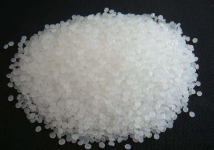read: 980 time:2025-07-03 16:56:17 from:化易天下
When discussing the basicity of compounds, particularly organic compounds, pyridine often comes up as an interesting case. Despite being a nitrogen-containing heterocycle, pyridine is classified as a weak base. In this article, we’ll explore the reasons why pyridine is a weak base by examining its structure, electronic configuration, and comparisons with other amine bases.
To understand why pyridine is a weak base, we must first consider its molecular structure. Pyridine is a six-membered aromatic ring with one nitrogen atom replacing one of the carbon atoms in the benzene ring. This nitrogen atom has a lone pair of electrons, which are not involved in the aromatic π-system of the ring. In many basic compounds, the availability of such a lone pair would typically make the molecule a strong base, as it could easily accept protons (H⁺). However, in pyridine, this is not entirely the case.
One of the key reasons why pyridine is a weak base lies in the delocalization of electrons within its aromatic ring. In pyridine, the nitrogen atom’s lone pair of electrons is in an sp² hybrid orbital, which is perpendicular to the plane of the aromatic ring. Because these electrons are not part of the π-electron system, they are less available for protonation than in other nitrogen-containing bases like ammonia or aliphatic amines. Additionally, protonation of the nitrogen would disrupt the aromaticity of the ring, making it less favorable. This stabilization of the ring’s aromaticity is a crucial factor in explaining why pyridine is a weak base.
To further understand why pyridine is a weak base, it is helpful to compare it with other nitrogenous bases. For instance, in ammonia (NH₃), the nitrogen atom’s lone pair is in an sp³ hybrid orbital and is fully available for protonation, making ammonia a stronger base. Similarly, in aliphatic amines like methylamine (CH₃NH₂), the nitrogen’s lone pair is also more readily available for protonation, resulting in a stronger basicity compared to pyridine. The decreased availability of the lone pair in pyridine due to its involvement in maintaining the aromatic system contributes to its relatively weaker basic nature.
The presence of substituents on the pyridine ring can further influence its basicity. Electron-donating groups such as alkyl groups can slightly increase the basicity of pyridine by making the lone pair on nitrogen more available for protonation. Conversely, electron-withdrawing groups like nitro (-NO₂) can decrease pyridine’s basicity even further by pulling electron density away from the nitrogen atom, making the lone pair even less available for protonation. This variability with substituents underscores the delicate balance of factors that make pyridine a weak base.
In summary, the question of "why pyridine is a weak base" can be attributed to several factors, primarily its molecular structure and the electron delocalization within its aromatic system. The lone pair of electrons on the nitrogen atom is less available for protonation because of its role in maintaining the aromaticity of the ring. Comparisons with other nitrogen-containing bases also highlight the unique electronic environment in pyridine, which ultimately results in its classification as a weak base. Understanding these nuances is essential for chemists, especially when predicting the behavior of pyridine in various chemical reactions.

Jincheng Petrochemical's 300000 ton polypropylene plant successfully trial production, 2024 polypropylene market analysis

The ABS market remains sluggish, what is the future direction?

Market differentiation of bisphenol A intensifies: prices rise in East China, while prices generally decline in other regions

The production method and process flow of silicone acrylic lotion, and what are the common raw materials